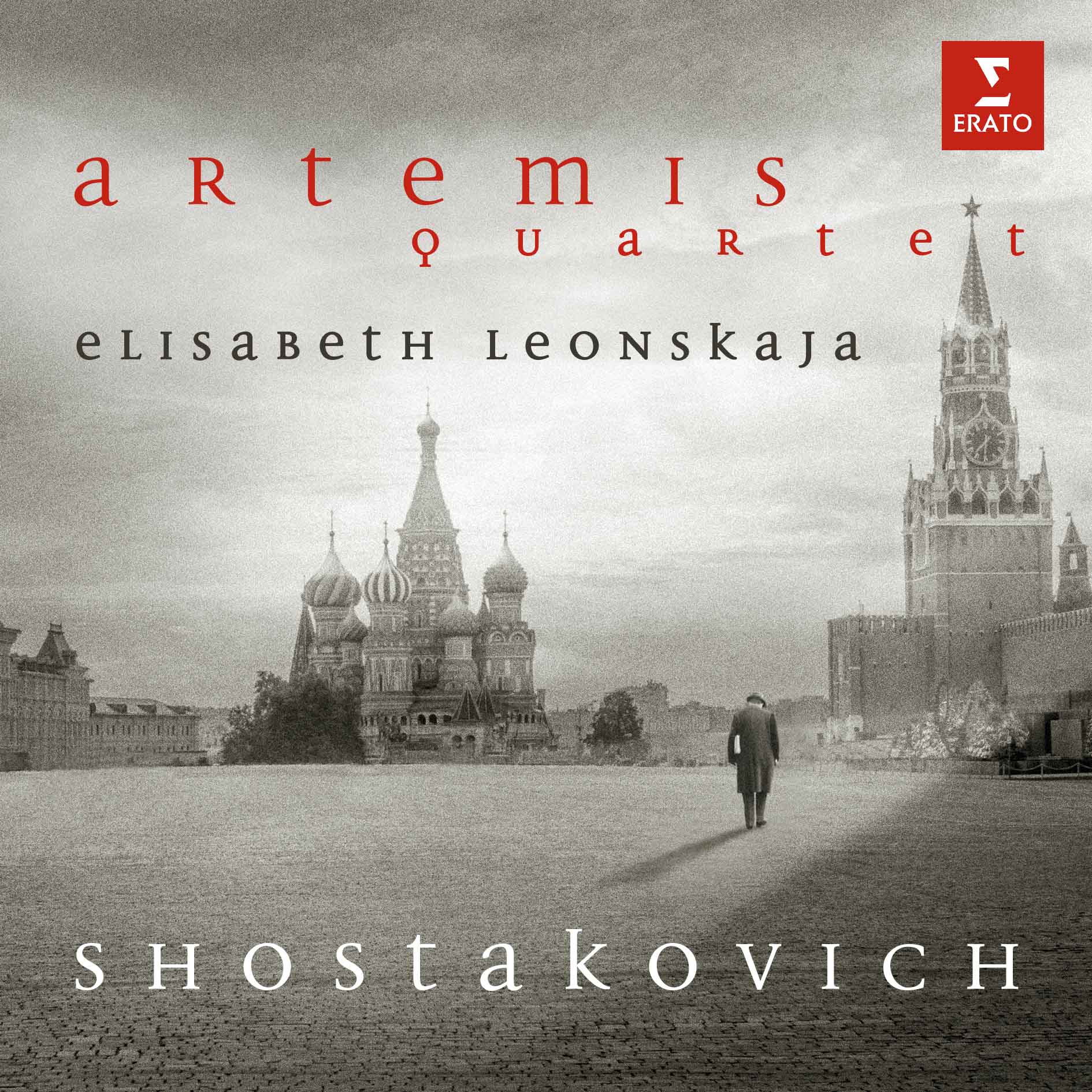
Shostakovich String Quartets Op. 9 & Op.57 - with Elisabeth Leonskaja
release date: 15th March 2019
String Quartet No. 5 in B flat major, Op. 9
I. Allegro non troppo
II. Andante
III. Moderato - Allegretto - Andante
Piano Quintet in G minor, Op. 57 with Lisa Leonskaja, piano
I. Prélude, lento
II. Fugue, adagio
III. Scherzo, allegretto
IV. Intermezzo, lento
V. Finale, allegretto
String Quartet No. 7, Op. 108
I. Allegretto
II. Lento
III. Allegro - Allegretto - [Adagio]
Artemis Quartet:
Vineta Sareika - violin
Anthea Kreston - violin
Gregor Sigl - viola
Eckart Runge - cello
Elisabeth Leonskaja - piano (Tracks 4-8)
The origins of this album, which comprises the Artemis Quartet’s first recordings of Shostakovich, lie in the ensemble’s warm relationship with the great pianist Elisabeth Leonskaja, who was born in the Soviet Union, but has long been resident in Vienna.
“For years now, we have been wanting to record the Shostakovich Piano Quintet with Elisabeth Leonskaja,” explains the quartet’s viola-player, Gregor Sigl. “There is a long-standing artistic and personal friendship between her and the Artemis Quartet. No other musician has appeared more frequently with the quartet and over the years she has performed with each line-up of the ensemble – the only person to do so. She demonstrated her deep commitment shortly after the sudden death in 2015 of Friedemann Weigle, the quartet’s previous viola-player. She immediately agreed to join the three remaining Artemis members in a memorial tour of music for piano quartet.”
Shostakovich’s Piano Quintet, which in its first two movements has echoes of Bach and Handel, is the earliest of the three works on this album. It dates from 1940, while the Quartet No 5 was first heard in 1953 and the Quartet No 7 received its first performance in 1960.
The composer, who was born in 1906, wrote 15 string quartets between 1938 and 1975, the year of his death. They have been seen to parallel his 15 symphonies. As Gramophone wrote: “If Shostakovich's cycle of 15 symphonies can be said to represent a musical thread passing through the whole of the composer's public life, then it can be argued that his cycle of 15 string quartets represents the private persona of the man behind the mask from the beginning of his personal anguish in the late 1930s until his death in 1975.”
As Grigor Sigl says: “In the 5th and 7th string quartets and in the piano quintet we discovered a very poetic and gentle side of Shostakovich. In each of these works the composer brings forth some deeply touching moments. In his music there is never any mistaking the sense of rebellion against a hated regime, his despair and sorrow and the sarcasm to which they often gave rise ... But it is also very much a matter of the quiet and consoling moments, in which Shostakovich – whether looking back or possibly looking forward – searches for inner peace and sometimes maybe finds it. We were especially struck by the overarching tension between a rhythmically dynamic temperament and a sense of extraordinarily gentle intimacy.”
The Quartet No 5 is an intense, sometimes desperate work whose three movements run in an uninterrupted span. Its personal nature is emphasised by its use of a thematic cell built from the notes D, E flat, C and B. They represent the composer himself, drawing on the German designations for those notes, D, Es, C, H, which become DSCH – Dmitri S(c)hostakovich. He used a similar technique in his Symphony No 10, which also dates from the early 1950s.
The concise and enigmatic Quartet No 7, also structured in three continuous movements, was composed in memory of the Shostakovich’s first wife, who had died in 1954. While it is expressive of pain and sorrow, its mood can also be agitated, playful, dream-like and contemplative.
back



